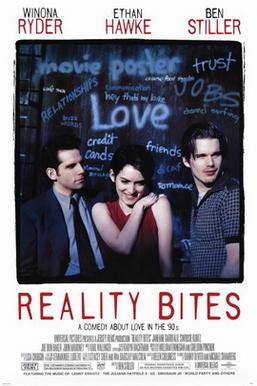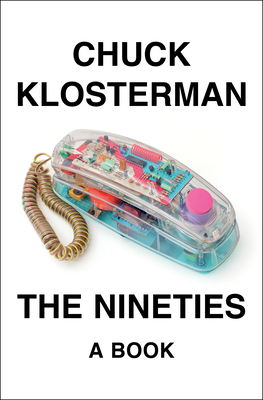I’ve just started reading Watergate: A New History, by Garrett M Graff. Every couple of years, I feel compelled to read a book about Watergate. I last read one back in 2018 (which I wrote about here; I have to say that my blog title of Conspiracy of Dunces still holds up).
I’m only a third of the way through this one (it clocks in at around 680 pages), but it’s a banger. I simply can’t read enough about Watergate. It’s the perfect mix of political drama, true crime, and clownish buffoonery.
Just because I’m having so much fun reading it, I feel obliged to drop a couple of the more amusing / interesting / weird anecdotes.
As I mentioned in my previous Watergate blog post, it all started with the Pentagon Papers. Daniel Ellsberg leaked them to major newspapers. The newspapers then published. The Federal government tried to stop them from publishing further, but that horse was already out of the barn and judges ruled against them. Nixon, outraged at the leak, made it a priority to stop future leaks. This led to the formation of the Plumbers, and ultimately to the ill fated break-in of the Watergate complex, which in turn led to a coverup that, when exposed, brought down Nixon and sent many people to prison.
What’s weird is that the Pentagon Papers was a deep dive into the lies and missteps of the Kennedy / Johnson administrations regarding the Vietnam War. Considering the fact that American soldiers were fighting and dying in a war in which Americans were being lied to, this was explosive stuff indeed. However, it had nothing to do with the Nixon administration, so you’d think that, if anything, Nixon would welcome the opportunity to have some mud thrown at the Democratic Kennedy / Johnson administrations. Indeed, at first, Nixon seemed to take that approach.
Apparently, someone then thought about Anna Chennault. Before the 1968 election, the Johnson administration tried very hard to end the Vietnam War. There were intense but apparently fruitful negotiations taking place between the US, the North Vietnamese, and the South Vietnamese governments at the Paris peace talks. With Vice President Humphrey rapidly erasing Richard Nixon’s lead in the looming election, Nixon and his campaign staff worried, if the Johnson administration managed to bring about a cease fire between the North and the South Vietnamese on the way to a possible peace, that it would be catastrophic to Nixon’s election prospects.
Enter Anna Chennault. She secretly arranged secret meetings between Nixon and the South Vietnamese ambassador (that only came to light in the 1980s). Beyond that, Chennault stayed in regular communication with the South Vietnamese, intimating to them that they would get a better deal if they waited until Nixon was elected.
Yes, while the US government was negotiating a peace agreement, Nixon was backdoor sabotaging the negotiations. I’m not sure if that qualifies as treason, but it certainly approaches the line. Given that the war continued until 1975 and that some 20,000 more American soldiers died (not to mention all of the Vietnamese, Cambodian, or Laotian casualties), this is a pretty horrible thing to contemplate.
So, while Nixon knew that the so-called Chennault Affair was not in the Pentagon Papers, he knew that if this information ever came to light that it would be disastrous to him. That was his true purpose for becoming so obsessed with stopping leaks.
Having so narrowly won the 1968 election, Nixon and his campaign staff were going to pull out all of the stops during the 1972 campaign. Nixon, being his usual paranoid self, was convinced that the democrats were going to pull all kinds of dirty tricks on him in the upcoming election. Therefore, it seemed only fair play for him to respond in kind. John Dean brought on former White House Plumber G Gordon Liddy to head up this effort, promising him large sums of money in support.
G Gordon Liddy, as usual, took his role just a bit too, ummm, intensely. He named his plan Operation GEMSTONE. It involved the following: kidnapping leaders of the radical left, drugging them, and holding them in Mexico until the end of the convention; outfitting a luxury houseboat with spy equipment, bringing on prostitutes, and enticing Democratic party leaders into compromising positions; multiple ‘black-bag jobs’ breaking into campaign offices to steal information; eavesdropping on the Democratic nominee by using a specially equipped spy plane; and bizarrely enough, hiring Cuban operatives to sabotage the Democratic convention’s (held in Miami) air conditioning so that the delegates would get unbearably hot.
Liddy presented this to the head of the Nixon campaign, John Mitchell, who just happened to also be at the same time the US Attorney General (you know, the guy that should be on the look out for blatant illegal acts). At the conclusion of Liddy’s presentation, Mitchell paused, took the pipe out of his mouth, told Liddy to come back with something a bit more realistic, and also told Liddy to personally burn the charts that he just presented.
In the competition for biggest maniac in the Nixon orbit, Chuck Colson would have given Liddy a run for his money. In many ways, Colson was more dangerous because he had Nixon’s ear. His office was right next to his. Nixon had a tendency to semi-randomly ramble about a whole variety of ideas. Haldeman and Ehrlichman had learned to kind of tune Nixon out when he was gestating on some of his wackier ideas. However, Colson, known as the guy who gets things done, would take some off-hand comment from Nixon and would run with it.
Nixon was convinced that there were materials like the Pentagon Papers at the Brookings Institution. He ordered Colson to have someone break in, rifle all of the files, and steal anything that seemed valuable. Colson’s plan to accomplish this (and I’m not kidding and don’t forget that this guy sat less than 100 feet from the President) was to: start a fire, have his people enter Brookings disguised as firemen (before the real firemen show up), break into a safe, steal the materials, and then slip away in the confusion. One of the people tasked to do this finally called John Dean and told him that this was nuts. Dean went to John Mitchell, who called Colson and said they didn’t need the material anymore.
The Committee to Reelect the President (famously known as CREEP) was absolutely awash in cash. When I say cash, I mean the green stuff. If someone needed funds, the finance manager would simply reach into the safe, grab potentially tens of thousands of dollars, put it into a manila envelope, and hand it out. After the Watergate burglars were caught, E Howard Hunt needed cash in Los Angeles. Liddy went to the CREEP safe, took out five thousand dollars, strapped most of it to his legs, tucked some of it in his socks, and then flew to Los Angeles to give Hunt the cash.
As part of their efforts to stop leaks, Liddy and Hunt focused their attention on Jack Anderson. Anderson was one of the most prominent journalists in the nation and had broken several stories that the Nixon administration considered to be dangerous to national security. Clearly, if you’re Liddy and Hunt and you have a journalist breaking possibly dangerous stories, the obvious solution would be to assassinate him. Some assassination ideas that they considered were: spreading a massive dose of LSD on the steering wheel of Anderson’s car in the hopes that that would initiate a crash, staging a fiery automobile crash, swapping out Anderson’s aspirin for poison, or a mugging gone wrong. Liddy volunteered to be the actual assassin. Luckily for Anderson, the ‘go’ order never came down from the White House.
Paranoia in the Nixon administration didn’t just stop at Nixon’s cronies. A Navy liaison to the National Security Council admitted, as he was being polygraphed, that he’d been regularly stealing White House files and supplying them to the Pentagon’s Joint Chiefs of Staff. The Chairman of the Joint Chiefs was Admiral Thomas Moorer. Caught, he probably expectedly to be cashiered. Instead Nixon reappointed him, thinking that Moorer would be more compliant to Nixon, given that Nixon now had dirt on him.
All of this was happening in the White House at the same time that the Vice President, Spiro Agnew, from his White House office, was receiving envelopes of cash as part of graft that he started from way back when he was county executive in Maryland (another insane story told in a book that I wrote about here in another blog title that has stood the test of time, Hail to the Thief).
All of this just shows that a hundred years from now when people like Bill Clinton and George W Bush are trivia answers that no one will remember, Richard Nixon will live on.








